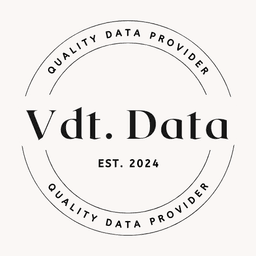Card fraud
Finance & Banking Analytics
Tags and Keywords
Trusted By




"No reviews yet"
Free
About
This dataset provides transactional data for detecting card fraud. It includes various features capturing the context, attributes, and outcomes of transactions, enabling users to analyze patterns and identify fraudulent activities. The dataset can be used for fraud detection modeling, data analysis, and testing machine learning algorithms.
Dataset Features:
- Transaction_ID: Unique identifier for each transaction.
- User_ID: Unique identifier for each user involved in a transaction.
- Transaction_Amount: The monetary amount of the transaction.
- Transaction_Date: Date of the transaction.
- Transaction_Time: Time of the transaction.
- Transaction_Location: Geographic location where the transaction occurred.
- Merchant_ID: Unique identifier for the merchant involved in the transaction.
- Device_ID: Identifier of the device used for the transaction.
- Card_Type: Type of card used (e.g., UzCard, Humo).
- Transaction_Currency: Currency in which the transaction was processed.
- Transaction_Status: Status of the transaction (e.g., Successful, Failed, Reversed).
- Previous_Transaction_Count: Number of prior transactions made by the user.
- Distance_Between_Transactions_km: Geographical distance between this transaction and the previous one.
- Time_Since_Last_Transaction_min: Time elapsed since the last transaction by the user.
- Authentication_Method: Method used to authenticate the transaction (e.g., 2FA, Biometric).
- Transaction_Velocity: Rate of transactions by the user in a given period.
- Transaction_Category: Type of transaction (e.g., Cash In, Cash Out, Payment).
- isFraud: Binary indicator of whether the transaction was fraudulent (1 for fraud, 0 for non-fraud).
Distribution
Detailing the format, size, and structure of the dataset:
- Data Format: Tabular data (CSV).
- Number of Records: 100000 rows
- Number of Columns: 18 columns, including identifiers, attributes, and outcomes.
- Column Types:
- Numeric Columns: Transaction Amount, Previous Transaction Count, Distance Between Transactions, Time Since Last Transaction, Transaction Velocity.
- Categorical Columns: User ID, Transaction Location, Merchant ID, Device ID, Card Type, Transaction Currency, Authentication Method, Transaction Category, Transaction Status.
- Datetime Columns: Transaction Date, Transaction Time.
- Binary Column: isFraud.
- File Size: 11.59 MB
- Dataset Structure: Each row represents a unique transaction, and each column provides a specific feature related to that transaction.
Usage
This dataset is ideal for a variety of applications:
- Fraud Detection Models: Train machine learning algorithms to classify fraudulent transactions.
- Anomaly Detection: Identify unusual patterns in transaction behavior.
- Behavioral Analysis: Analyze user and merchant transaction patterns.
- Authentication Method Efficiency: Study the effectiveness of different authentication methods in preventing fraud.
- Risk Assessment: Develop tools for assessing the risk of fraud in financial transactions.
Coverage
Explain the scope and coverage of the dataset:
- Geographic Coverage: Includes transaction data from various regions such as Surkhandarya, Namangan, and Navoiy, among others.
- Time Range: Data is collected starting from January 1, 2024, to January 7, 2024 (specific end date depends on the full dataset).
- Demographics : Covers a range of user types, transaction categories, and merchant activities.
License
CC0 (Public Domain)
Who Can Use It
List examples of intended users and their use cases:
- Data Scientists: For training and validating machine learning models.
- Researchers: For academic or scientific studies on fraud detection and prevention.
- Businesses: For enhancing fraud monitoring systems and developing insights into transaction patterns.
- Students and Educators: for teaching and learning data analysis, machine learning, and cybersecurity principles.
Loading...
